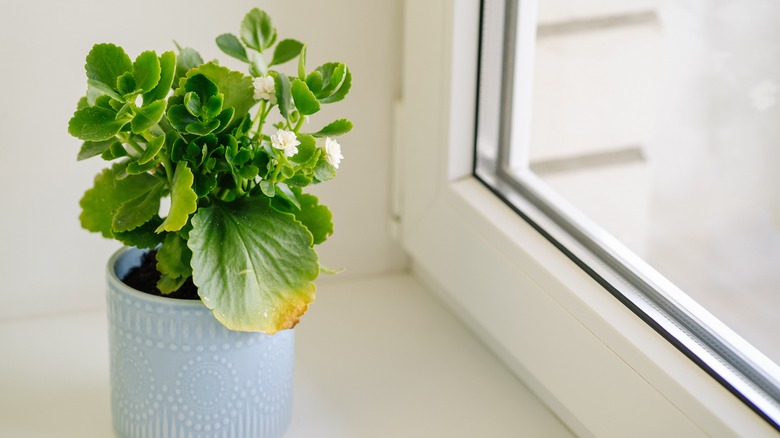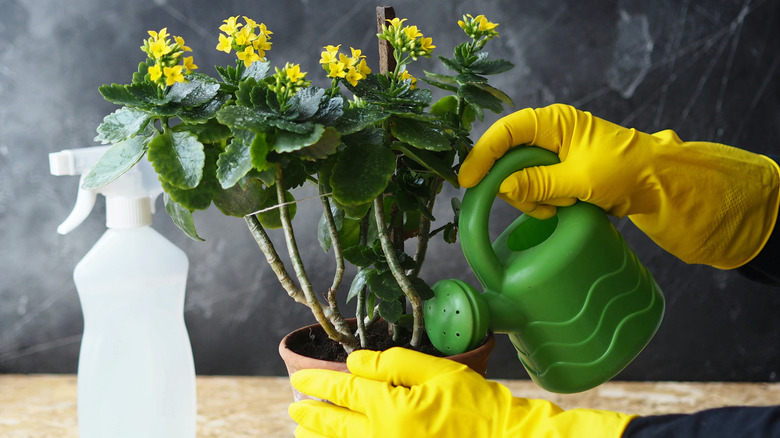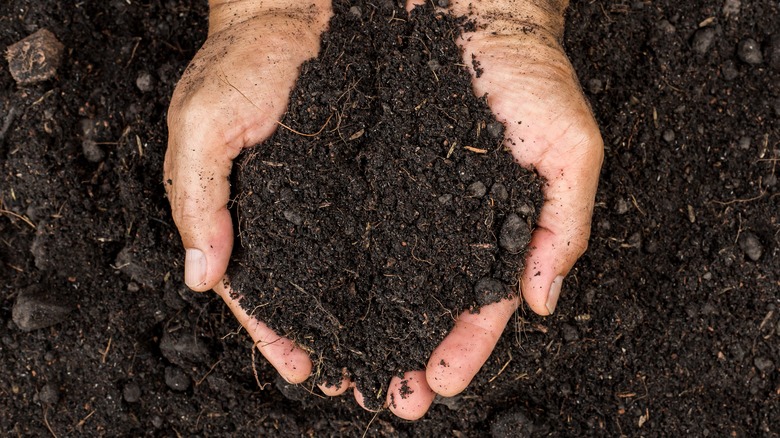Why Your Calandiva Plant Leaves Are Yellowing (And Tips To Revive Them)
Succulents became a staple in North America in 2007 and have been growing in popularity ever since. The Calandiva (Kalanchoe blossfeldiana 'Calandiva') is a cultivar, a succulent bred for its desired qualities. It was discovered as a mutant strain of Kalanchoe in 1998 and marketed for sale in 2002. The Calandiva plant differs from a standard Kalanchoe because of its unique double flowers. These flowers blossom in an array of colorful shades and make a beautiful addition to any home. While hardy, one of the main issues home gardeners face with potted Calandiva is yellowing leaves.
Succulent plant leaves come in a variety of colors. You know something is wrong when naturally green leaves start turning yellow. This leaching of color is called chlorosis and is caused by a drop in chlorophyll. As chlorophyll is required for a plant to produce food through photosynthesis, chlorosis can be quite harmful. The culprit of discoloration in succulent plants is often related to watering schedules or nutrient availability. Here, you'll get a closer look at what causes yellow leaves and how to take care of Kalanchoe Calandiva plants to avoid them.
Overwatering or underwatering your Calandiva plant
While the blossoming Calandiva was cultivated in Sweden, the Kalanchoe plant is native to the tropical rainforests and arid deserts of Madagascar. Too much or too little water can be problematic. Along with the yellowing of leaves, overwatering your plant may cause a change in texture as the succulent softens. On the other side of the moisture spectrum, underwatering causes Calandiva plants to dry out. The leaves change from green to yellow to brown and then fall off. Overwatered plants have a better chance of recuperation.
You can save your overwatered plant by skipping a few waterings and checking for drainage in the plant pot. Indoor Calandiva plants only need watering once every two to three weeks. Let the soil dry completely in between. Using well-draining soil over fine soil also reduces waterlogging. Underwatered plants are harder to save. Unfortunately, once the roots begin to die, it may be too late. To monitor soil dampness, insert a wooden chopstick into the plant pot. If it's only damp at the bottom or comes out completely dry, it's time for water. You can also buy soil testers or moisture meters to check moisture, soil pH, and nutrient levels.
Missing nutrients in Calandiva soil
There are 16 nutrients required by plants to flourish, including nitrogen, oxygen, potassium, magnesium, and iron. When your Calandiva plant doesn't get enough nutrients, it could lead to chlorosis, but not all nutrients are created equal. Yellow leaves are typically a sign that your succulent needs iron or has too much manganese. Some nutrients can't be absorbed in their natural form. Knowing the best ways to prep soil helps you avoid nutrient deficiency.
You'll need a soil test to check the nutrients in your potting soil. You can buy these through many gardening and home hardware retailers. Along with nutrient levels, look at the pH balance. Iron is best absorbed in acidic soil. A reading below 6.7 is ideal. If your soil is too alkaline (the pH is high), you can fix imbalances by adding fertilizer designed to increase acid levels or with iron sulfate. If high levels of manganese is the issue, it may be due to low calcium, overwatering, or low pH (under 5.5). Monitoring watering schedules as outlined above and regularly checking pH will help with yellowing Calandiva leaves.


